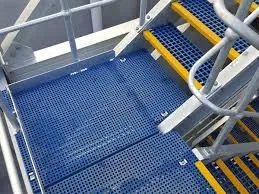
-
 Afrikaans
Afrikaans -
 Albanian
Albanian -
 Amharic
Amharic -
 Arabic
Arabic -
 Armenian
Armenian -
 Azerbaijani
Azerbaijani -
 Basque
Basque -
 Belarusian
Belarusian -
 Bengali
Bengali -
 Bosnian
Bosnian -
 Bulgarian
Bulgarian -
 Catalan
Catalan -
 Cebuano
Cebuano -
 China
China -
 China (Taiwan)
China (Taiwan) -
 Corsican
Corsican -
 Croatian
Croatian -
 Czech
Czech -
 Danish
Danish -
 Dutch
Dutch -
 English
English -
 Esperanto
Esperanto -
 Estonian
Estonian -
 Finnish
Finnish -
 French
French -
 Frisian
Frisian -
 Galician
Galician -
 Georgian
Georgian -
 German
German -
 Greek
Greek -
 Gujarati
Gujarati -
 Haitian Creole
Haitian Creole -
 hausa
hausa -
 hawaiian
hawaiian -
 Hebrew
Hebrew -
 Hindi
Hindi -
 Miao
Miao -
 Hungarian
Hungarian -
 Icelandic
Icelandic -
 igbo
igbo -
 Indonesian
Indonesian -
 irish
irish -
 Italian
Italian -
 Japanese
Japanese -
 Javanese
Javanese -
 Kannada
Kannada -
 kazakh
kazakh -
 Khmer
Khmer -
 Rwandese
Rwandese -
 Korean
Korean -
 Kurdish
Kurdish -
 Kyrgyz
Kyrgyz -
 Lao
Lao -
 Latin
Latin -
 Latvian
Latvian -
 Lithuanian
Lithuanian -
 Luxembourgish
Luxembourgish -
 Macedonian
Macedonian -
 Malgashi
Malgashi -
 Malay
Malay -
 Malayalam
Malayalam -
 Maltese
Maltese -
 Maori
Maori -
 Marathi
Marathi -
 Mongolian
Mongolian -
 Myanmar
Myanmar -
 Nepali
Nepali -
 Norwegian
Norwegian -
 Norwegian
Norwegian -
 Occitan
Occitan -
 Pashto
Pashto -
 Persian
Persian -
 Polish
Polish -
 Portuguese
Portuguese -
 Punjabi
Punjabi -
 Romanian
Romanian -
 Russian
Russian -
 Samoan
Samoan -
 Scottish Gaelic
Scottish Gaelic -
 Serbian
Serbian -
 Sesotho
Sesotho -
 Shona
Shona -
 Sindhi
Sindhi -
 Sinhala
Sinhala -
 Slovak
Slovak -
 Slovenian
Slovenian -
 Somali
Somali -
 Spanish
Spanish -
 Sundanese
Sundanese -
 Swahili
Swahili -
 Swedish
Swedish -
 Tagalog
Tagalog -
 Tajik
Tajik -
 Tamil
Tamil -
 Tatar
Tatar -
 Telugu
Telugu -
 Thai
Thai -
 Turkish
Turkish -
 Turkmen
Turkmen -
 Ukrainian
Ukrainian -
 Urdu
Urdu -
 Uighur
Uighur -
 Uzbek
Uzbek -
 Vietnamese
Vietnamese -
 Welsh
Welsh -
 Bantu
Bantu -
 Yiddish
Yiddish -
 Yoruba
Yoruba -
 Zulu
Zulu
A Complete Guide to Chemical Products for Fiber Reinforced Polymer Applications
Chemical Products for FRP Applications A Comprehensive Guide
Fiber Reinforced Polymer (FRP) composites have revolutionized various industries, offering lightweight, high-strength alternatives to traditional materials. Their unique properties make them suitable for a diverse range of applications, from construction to aerospace. At the core of FRP manufacturing and application lies a variety of chemical products that enhance performance, durability, and functionality. This article provides an overview of the essential chemical products used in FRP applications.
1. Resin Systems
Resins are the backbone of FRP composites, serving as the matrix that binds the fibers together. The most commonly used resin systems include
- Polyester Resins Widely used due to their cost-effectiveness and ease of processing, polyester resins are ideal for general-purpose FRP applications. They offer good mechanical properties and resistance to environmental factors.
- Vinyl Ester Resins Offering superior chemical resistance and mechanical performance compared to polyester, vinyl ester resins are often used in applications requiring higher durability, such as marine and industrial environments.
- Epoxy Resins Known for their excellent adhesion, low shrinkage, and superior mechanical properties, epoxy resins are preferred in high-performance applications, including aerospace and automotive industries.
2. Reinforcement Materials
The performance of FRP composites heavily relies on the type and orientation of reinforcement materials used. Common reinforcements include
- Glass Fibers The most widely used reinforcement in FRP composites, glass fibers provide good tensile strength and are resistant to moisture and chemicals. They are commonly found in construction and automotive sectors.
- Carbon Fibers Known for their exceptional strength-to-weight ratio, carbon fibers are used in high-performance applications, such as aerospace and sports equipment, where weight savings are critical.
- Aramid Fibers With excellent impact resistance, aramid fibers (such as Kevlar) are used in applications requiring high toughness and durability, including ballistic protection and advanced composites
.chemical products for frp applications a comprehensive guide ...

3. Additives and Fillers
To enhance specific properties of FRP composites, manufacturers often incorporate various additives and fillers
- Catalysts and Hardeners These are essential for controlling the curing process of resins. Commonly used in epoxy systems, hardeners determine the final properties of the composite, such as cure speed and mechanical strength.
- Accelerators Used to speed up the curing process, accelerators can significantly reduce production time, which is crucial for high-volume manufacturing.
- Fillers Fillers such as talc, calcium carbonate, and silica improve the mechanical strength, reduce costs, and modify the viscosity of the resin system. Their selection depends on the desired application and the properties required.
- Colorants and Pigments To enhance aesthetic appeal and UV protection, colorants and pigments are added to the resin systems. These ensure that the final product not only performs well but also meets design criteria.
4. Surface Treatments
Surface treatments are crucial for improving the adhesion and performance of FRP composites
- Coupling Agents These chemical agents are used to enhance the bond between the fibers and the resin, significantly improving the mechanical performance of the final composite.
- Release Agents Used to prevent bonding between the mold and the composite material, release agents facilitate the easy removal of parts without damaging the mold or the finished product.
Conclusion
The chemical products used in FRP applications are vital in determining the performance, longevity, and overall success of these advanced materials. By understanding the various resin systems, reinforcement materials, additives, and surface treatments available, manufacturers can optimize their processes to produce high-quality FRP composites tailored to specific applications. As technology advances, the development of new chemical products will continue to push the boundaries of what is possible with FRP materials, opening up further possibilities for innovation and design in numerous industries.









